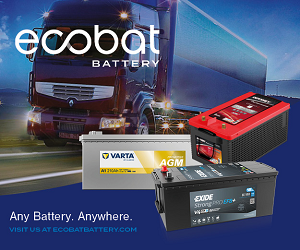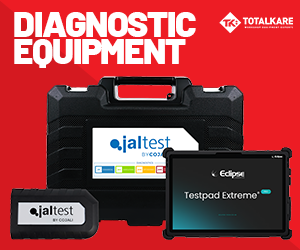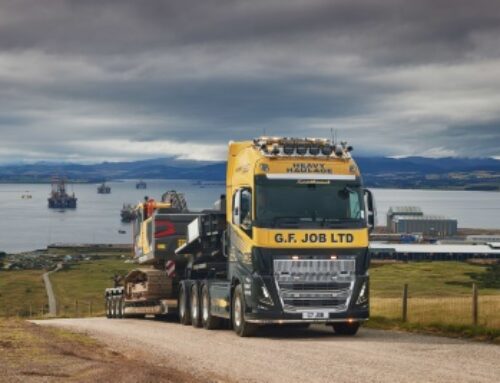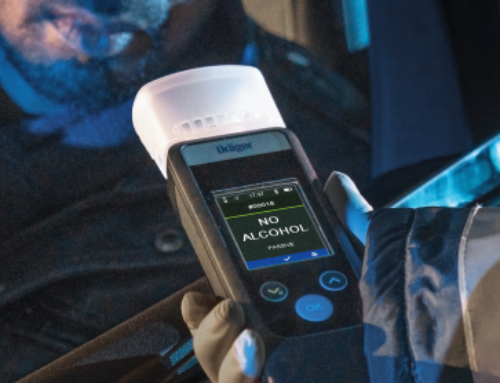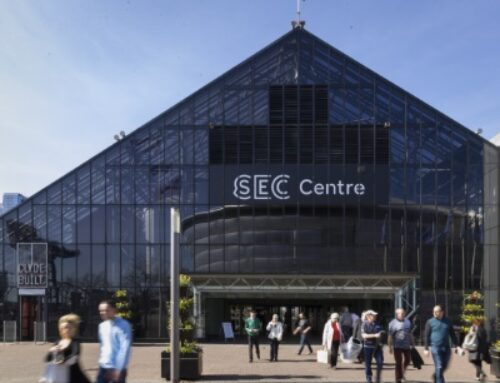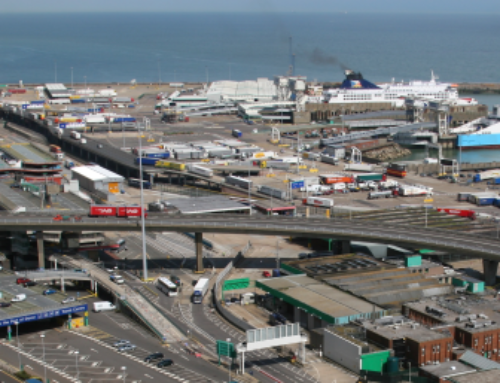Industry bosses set out roadmaps to net zero
Top truck industry executives used the recent IAA Transportation show to lay out their routes to carbon-free road freight transport. It is clear that, while there is some consensus on the way forward, operators will be offered a wide range of technical solutions by the various manufacturers, and much depends on government incentive and investment.
 Electric trucks will be able to handle most of the tasks currently undertaken by diesels, Christian Levin, Traton’s CEO (pictured, right), told Transport Operator.
Electric trucks will be able to handle most of the tasks currently undertaken by diesels, Christian Levin, Traton’s CEO (pictured, right), told Transport Operator.
Mr Levin said that, in spite of this, Traton did not think there was just one solution to providing carbon-neutral road transport.
“We will see 10 years’ domination of the market by battery-electric trucks, but fuel cells will probably take 10 per cent of the European truck market, and maybe as much as 20 per cent in the USA, where speeds are higher, gross weights lower, and distances longer.
“Electrolysing hydrogen and using it in a fuel cell uses three times as much electricity as using batteries to power a vehicle, so it is far more expensive. But hydrogen allows the operator more payload and more chassis space on the vehicle.”
 Traton’s Scania subsidiary was already working on decarbonising its supply chain, with emphasis on batteries, iron and steel. It had pilot battery-electric trucks working in mines at gross weights of 74 and 80 tonnes. Traton was also part of the €500 million joint venture to develop a commercial vehicle charging network, which would be completed in the next five years.
Traton’s Scania subsidiary was already working on decarbonising its supply chain, with emphasis on batteries, iron and steel. It had pilot battery-electric trucks working in mines at gross weights of 74 and 80 tonnes. Traton was also part of the €500 million joint venture to develop a commercial vehicle charging network, which would be completed in the next five years.
A new Scania megacharger would enable trucks to be driven at 80 km/h for four-and-a-half hours, recharged for 45 minutes and then driven for another four-and-a-half hours, bringing range and charging times into line with EU drivers’ hours regulations.
Electric vehicles would have to be introduced as a part of a total solution backed by the vehicle manufacturer. It would not be a case of just dropping them into an operation as a direct replacement for diesel trucks. The solution would involve financing and servicing, and also operational analytics to ensure the constraints imposed by battery-electric vehicles could be accommodated.
Alexander Vlaskamp, CEO of fellow Traton brand MAN Truck & Bus, said: “We are making our production more flexible and are building our future heavy-duty eTruck on a production line with conventional vehicles in order to be able to electrify trucks or manufacture them with diesel drive, depending on our customers’ requirements.
 “At the start of production, our new eTruck will cover all application areas, whether for the regional distribution of organic milk or long-distance transport of green steel. We will support our customers as closely as possible in their transition to e-mobility, based on our many years of expertise in the field of e-buses and vans as well as our electric eTGM in distribution transport.”
“At the start of production, our new eTruck will cover all application areas, whether for the regional distribution of organic milk or long-distance transport of green steel. We will support our customers as closely as possible in their transition to e-mobility, based on our many years of expertise in the field of e-buses and vans as well as our electric eTGM in distribution transport.”
He said the truck industry would follow cars on the path to electric power. “In terms of total cost of ownership, electricity will be better by the second half of the decade.”
Hydrogen did not seem an attractive proposition: “Three-quarters of output is lost through energy conversion from electricity to hydrogen and back again. Green hydrogen is too expensive, and will remain so until beyond 2035.
“Demand for heavy electric vehicles is picking up. We have covered 1.5 million km with electric distribution trucks in Europe, and also have electric buses in operation.
“Our 50-tonne electric truck will have a 600 km-plus range and charge to 80 per cent of capacity in under an hour on a megacharger.
“We are opening our order-book today: tippers, fridges, cranes and more are all possible with electric trucks.
“Electric truck production will scale up drastically from 2025, and we expect exponential growth in etrucks from 2035.”
 Daimler Trucks is partnering with Traton (along with Volvo Group) in the CV charging network joint venture.
Daimler Trucks is partnering with Traton (along with Volvo Group) in the CV charging network joint venture.
Karin Rådström, Daimler Trucks director for Europe and South America, said she was confident that electricity prices would have fallen back to give parity or better with diesel in two years’ time, when the full range of Mercedes battery-electric trucks would come on stream.
“If not, then we will need a CO2 tax, or electric trucks will need more subsidy. Customers will be driven away from diesel by higher prices.”
While Mercedes would produce hydrogen fuel cell tucks for the longest and toughest routes, Ms Rådström said there were no plans for hydrogen combustion engines at Daimler Trucks.
“Hydrogen ICE is not a pure path: it is not truly net zero,” she said.
Gerrit Marx, the chief executive of Iveco, could not disagree more. He was aiming for net zero by 2040, and his company exhibited a full array of low and no-carbon solutions including a new hydrogen-capable multi-fuel 13-litre engine with class-leading power output.
Iveco’s engine supplier, FPT, is the first manufacturer to produce a Euro VI 13-litre diesel truck engine with an output exceeding 600 hp, putting it in the same territory as 16-litre units from other manufacturers.
The 12.9-litre XC13 engine has the same bore and stroke as the existing FPT Cursor 13 engine and features double overhead camshafts. Electronic common-rail injection delivers diesel at 2,500 bar pressure while induction is handled by an electronically-controlled variable-geometry turbo running on ball-bearings. The engine does not use exhaust gas recirculation: emissions are handled by a diesel oxidation catalyst followed by a particulate filter, SCR unit and clean-up catalyst.
FPT said the engine had been designed with Euro VII in mind, and can be modified to produce specific versions for other fuels including natural gas and hydrogen. Diesel outputs range from 460 to 601 hp and maximum torques from 2300 to 2850 Nm. Natural gas versions currently produce between 480 and 520 hp.
“It is well-to-wheel that is important, not just tailpipe emissions,” said Gerrit Marx. “It makes no sense to commit 100 per cent to one technology.”
New business models would be required for electric trucks: Iveco was launching GATE: a Green and Advanced Transport Ecosystem.
Electric trucks would be offered on a pay for use basis. “It’s the only way possible because of the price of the technology,” he said.
 As alternatives, Iveco had pioneered methane gas trucks, was launching a fuel-cell version of the Daily using a Hyundai fuel cell, and had joined with Nikola to get the world’s first battery Class 8 heavy trucks in operation in the USA, with similar vehicles now running in Hamburg docks. These vehicles were achieving ranges of 530 km and uptime of 98 per cent.
As alternatives, Iveco had pioneered methane gas trucks, was launching a fuel-cell version of the Daily using a Hyundai fuel cell, and had joined with Nikola to get the world’s first battery Class 8 heavy trucks in operation in the USA, with similar vehicles now running in Hamburg docks. These vehicles were achieving ranges of 530 km and uptime of 98 per cent.
Hydrogen fuel cell Nikolas had been in operation in the USA since January. They offered 800 km range and the equivalent of 645 hp output, yet had high parts commonality with the battery version.
Patrick Dean is chief engineer of vehicle development at Paccar subsidiary DAF, having previously worked in the same position at Paccar’s Kenworth subsidiary in America.
He pointed out that even with its diesel engines, DAF had reduced CO2 emissions by 30 per cent from 2019, and it was the first manufacturer in Europe with a production battery truck: the CF Electric.
When it came to power choices, “The future is still unclear, there is such a wide variety of tasks in transport,” he pointed out.
This was matched by a wide range of power sources: clean diesel, hybrid, battery electric and hydrogen.
 “DAF will continue with diesel development,” he said. “Hybrid will work for trucks on long routes that have to enter cities. Kenworth has hydrogen fuel cell trucks, and DAF has an XF with a hydrogen combustion engine.
“DAF will continue with diesel development,” he said. “Hybrid will work for trucks on long routes that have to enter cities. Kenworth has hydrogen fuel cell trucks, and DAF has an XF with a hydrogen combustion engine.
“Battery trucks will be sup-ported by Paccar fast chargers that can deliver an 80 per cent charge in 45 minutes. An on-board charger is also available to allow AC charging.
“Production of electric XF and XD trucks will commence in 2023, with orders being taken now. Motors will range from 200 to 500 kw output, and 4×2 tractors, and 4×2 and 6×2 rigid chassis will be available.”
Volvo Group is aiming for a flexible transition to electric power, with diesel and electric trucks being built on the same production lines to meet demand.
Its research indicated that large e-commerce and manufacturing companies would take fossil fuel consumption into account when buying transport services. Seventy-eight per cent of these key customers would pay more for transport with little or no CO2 emissions, and 85 per cent would change transport providers if their CO2 objectives could not be met.
Volvo’s own customers had indicated that they would require a total solution before going electric, including help with route planning, charging, maintenance and finance.
 Jessica Sandström, head of global product management (pictured, right), said that many Volvo customers could “go electric right now.
Jessica Sandström, head of global product management (pictured, right), said that many Volvo customers could “go electric right now.
“Fifty per cent of goods travel 300 km or less, so trucks transporting them could charge overnight at the depot. Every electric Volvo comes with a charger, and a top-up charge will take you 500 km.”
Volvo had crash-tested its electric trucks beyond legislative requirements, and was confident that the high-voltage systems would isolate in a crash and the batteries would not become detached.
It expected to introduce its first fuel cell trucks, for ultra-long distance and heavy-haulage, in 2025. In addition, it would launch its own e-axle for fuel cell and battery applications. Replacing the conventional diesel-style layout of centreline motor, transmission and propshaft layout by incorporating the electric motor and transmission within the axle structure would free chassis space for additional batteries.



